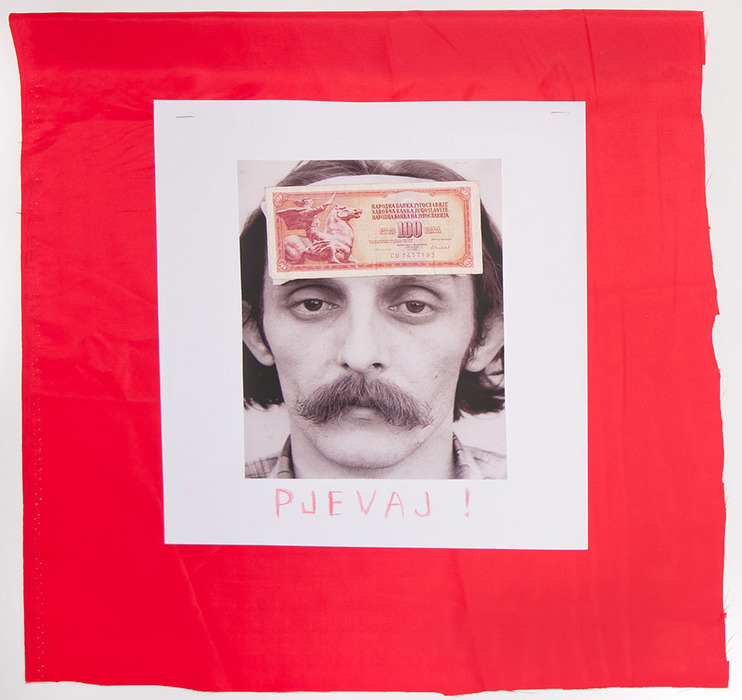
Mladen Stilinović, one of Croatia’s most important contemporary artists, passed away last night after battling a serious illness. He was 69 years old.
Born in Serbia two years after the end of World Word II, Stilinović’s early art career took shape in the political and ideological reality of Tito’s Yugoslavia. Stilinović became a leading figure in Croatia’s “New Art Practice” movement, and a co-founding member of the neo-avantgardist “Group of Six Artists” together with Vlado Martek, Boris Demur, Željko Jerman, Sven Stilinović, and Fedor Vucemilovic, active in Zagreb in the second half of the 1970s.
Mladen Stilinović, Artist at work (1977). Courtesy of Museum of Modern Art, Warsaw.
After the fall of the Iron Curtain, Stilinović expanded his study of language—which played a central role in his conceptual work, along with the color red—to include social aspects of various societies and their interrelationship. In 1993, he published the text “In Praise of Laziness,” in which he compared the challenges faced by artists from the Eastern Bloc as opposed to their contemporaries in the West, peppering his critique with irreverent humor:
Artists in the West are not lazy and therefore not artists but rather producers of something… Their involvement with matters of no importance, such as production, promotion, gallery system, museum system, competition system (who is first), their preoccupation with objects, all that drives them away form laziness, from art. Just as money is paper, so a gallery is a room.
Artists from the East were lazy and poor because the entire system of insignificant factors did not exist. Therefore they had time enough to concentrate on art and laziness. Even when they did produce art, they knew it was in vain, it was nothing.
One of Stilinović’s most famous works is the series Exploitation of the Dead (1984–1990) which has been exhibited widely, including at the 2007 Documenta in Kassel. The series comprises a large number of alternating elements which the artist reorganizes differently with every showing. Through endless repetitions, the artist explored how objects imbued with a historically specific meanings lose their points of reference over time, their meaning subsequently shifted and sentimentalized.
Stilinović was clear about the work’s critical statement about the relics used to push ideological and religious ideas: “If death has to be exploited, this is a violent act and we need to weigh up the consequences.”